What's Good: Screen is far easier to use thanks to the addition of electronic sensors; OS 5.0 improves overall device functions dramatically.
What's Bad: Despite improvements, SurePress is still harder to use than similar industry competitors. Additionally, the browser still needs work.
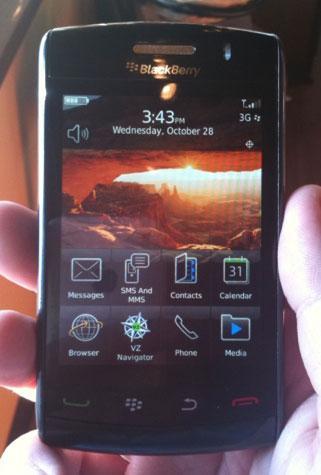
Almost one full year later, RIM and Verizon Wireless are at it again with the BlackBerry Storm2, their second attempt at a full touchscreen BlackBerry device. Despite the relatively strong sales numbers, reports of build quality problems, typing issues, and the like surfaced on the internet within moments of the device launching. Months and numerous software revisions later, the world (and more specifically, the BlackBerry community) is well aware of the original Storm frustrations. The Storm2 is on the scene, and with it comes several notable improvements such as Wi-Fi, a revamped SurePress display, and OS 5.0. Will the phone outshine its predecessor to become a legitimate contender in the multimedia category?

The left side of the device houses a microUSB charging port and a shortcut key, while the right side sports a 3.5mm headphone jack, volume rocker, and a second shortcut key card slot. The front of the device sports the touchscreen and a dedicated row containing send, 'BlackBerry,' back, and end keys. On the top of the phone, a power/lock button and mute key can be found. The 3.2-megapixel camera is located on the back, and the microSD card slot is located under the battery cover, just below the battery. Both shortcut keys on the left and right sides of the phone are completely customizable, and have migrated away from the chrome accents in favor of a rubberized texture. Gone are the two spring-loaded clasps on the battery door of the Storm; the Storm 2 has graduated to a "hook" method (much like the Curve 8520). To close the battery cover, simply line up the hooks, and apply a bit of force.
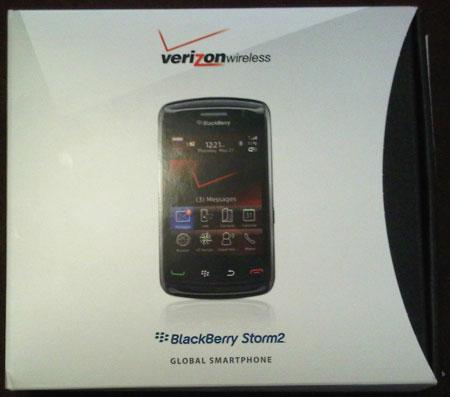
The BlackBerry Storm2 ships with the device, battery, travel charger, USB cable, earphones, Verizon SIM card (for international use), and a 16 GB microSD card (installed in the device). Coming in at 2.4-inches wide by 4.4-inches long by 0.5-inch thick, the Storm2 weighs 5.6 ounces, making it a bit heavier than the average smartphone. The 3.3-inch capacitive LCD display houses 65,000 colors and 360 x 480 pixels. Much like the original Storm, the display on the Storm2 is a pleasure to use due to the large size. Colors are rich and vibrant.
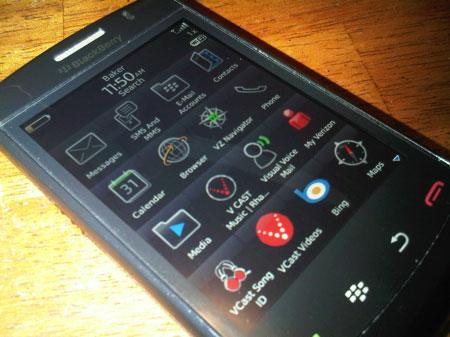
OS 5.0 in action - note the new SMS/MMS icon and installed applications.
As the first retail unit to offer OS 5.0 out of the box, die-hard BlackBerry users will immediately notice changes in OS 5.0.0.320. Featuring threaded text messaging, improvements in the accelerometer, a faster boot sequence (a common frustration among BlackBerry users), an updated web browser with several improvements, and a refreshed "applications installed" menu, it's nice to see the OS on retail shelves. The threaded text messaging was something we saw coming, but it's nice to have it supported out of the box. As with any BlackBerry, the menus are customizable. Out of the box, the Storm2 offers VZ Navigator, V CAST Music with Rhapsody, Visual Voicemail, My Verizon, VCast Song ID, VCast Videos, Bing, City ID, Facebook, MySpace, Flickr, and Slacker Radio. Documents to Go (Word, Excel, and PowerPoint) is also pre-installed on the Storm2, along with Windows Live Messenger, Yahoo! Messenger, Google Talk, AOL Instant Messenger, and BlackBerry Messenger. Popular apps such as UberTwitter, buzzd, and Poynt can be downloaded from the BlackBerry App World. The Storm2 is also the first CDMA BlackBerry to offer Wi-Fi. Yes, the device is an EVDO Rev. A unit, but there's always a time where Wi-Fi could be used (not to mention, it's faster).
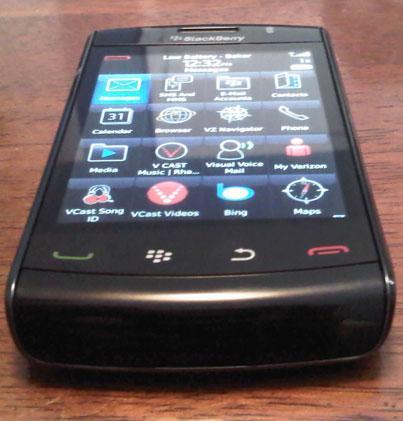
The primary improvement on the BlackBerry Storm2 lies below the surface. To elaborate, the original Storm's SurePress technology consisted of a single "button" underneath the middle of the screen. That "button" controlled the entire display, so it made it challenging at times, particularly when the user was trying to press in one of the four corners of the display. After weeks of being on the market, reports surfaced of some corners being harder to press than others. Thankfully, the Storm2 has abandoned the physical button in favor of a new SurePress technology. In the Storm2, the display is mounted on four electronic actuators that generate an impulse when the screen is pressed. The new technology also allows for multi-touch (shift + C, for example), leading to faster typing. Because the screen is powered electronically (as opposed to the original Storm), the click that you feel is simulated - the screen isn't actually moving. As a result of the new technology, the screen is far more consistent than that of the original, and typing has become much easier. I can safely say that writing e-mails on the Storm2 is pleasurable - granted, it doesn't take the place of a physical QWERTY, but it is a significant improvement.
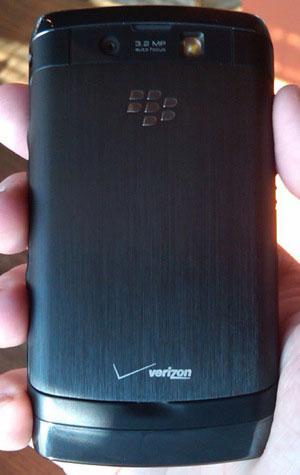

The 3.2-megapixel camera worked well.
The Storm2 offers a 3.2-megapixel camera, and in my testing, pictures taken came out well. The only frustration I encountered was a slight shutter lag, making it frustrating to take pictures of moving objects. The Storm2 can also record video, though they came out a bit grainy during testing. The Storm2 offers a 2x digital zoom along with the ability to customize the flash settings, autofocus, white balance, picture size (large, medium, or small), picture quality (superfine, fine, normal), color effect, geotagging, and the location to store the pictures. The video camcorder was decent; much like the devices on the market, it was fine for basic videos.
I tested the Storm2 in New York City and Charlotte, and call quality was very good. Callers had no problem hearing me, and call quality was clear on my end as well. When I went to a known Verizon fringe area, I found calls to sound mostly clear, despite the Storm2 fluctuating between 3G and 1xRTT coverage. I successfully paired the Plantronics Voyager Pro Bluetooth headset to the device without issue. Like all BlackBerry devices in recent memory, the Storm2's speakerphone was very loud, slightly edging out the Bold 9700 in regards to volume. When testing the device in a busy retail store, I was able to hear my callers well.

The Storm2 uses the D-X1 battery, and comes with a SIM card and 16 GB microSD card pre-installed.
Like the original device, the Storm2 is a world phone, so it ships with a SIM card for international use. In addition to the CDMA 850/1900 MHz bands, the Storm2 supports GSM 850/900/1800/1900 MHz frequencies and the WCDMA 2100 MHz band. According to Verizon, the device supports voice coverage in 220 countries and 3G data coverage in 175 countries. Individual rates vary depending on the country, and can be found on Verizon's website. The BlackBerry Storm2 is an EVDO Rev. A device, and as such, I was pleased with data speeds. The full PhoneDog homepage loaded in 32 seconds, and other data-intensive tasks loaded well throughout the testing. Unfortunately, though the browser on the Storm2 is one of the best in the BlackBerry lineup, it still pales in comparison to other devices in the smartphone arena.
Estimated talk time is 5.5 hours, and in my testing, battery life was reasonable. With moderate use encompassing text messaging, calling, e-mail, and web browsing, I was able to make it just over a day before the low battery warning flashed. With little to no use, the device lasted just under three days. As a media device, one full day of battery life with moderate usage is acceptable, in my opinion. Like any wireless device, battery numbers will vary with the level of usage that they're subjected to between charging cycles, but the Storm2 should please most users. For those frequently away from the office, there are other BlackBerry devices that are better in the battery department.
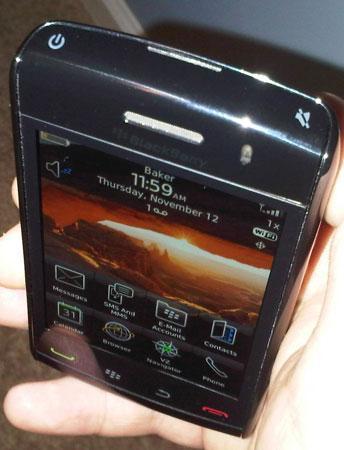
The Storm2 excites me because it's genuinely a great product, it's proof that RIM can bridge the divide between "professional" and "multimedia," and perhaps most importantly, it's the company's first legitimate stab at the touchscreen market. Everything I love about the BlackBerry product, it has, along with everything I love about touchscreen devices (particularly, the iPhone - I hate to compare it, but it's true). My favorite improvement isn't a physical device improvement, but rather that with the launch of the Storm2, non-BlackBerry users will finally view the device as a legitimate alternative to other touchscreen devices on the market. More Storm2 owners translates into a higher market share for the BlackBerry brand. While the original Storm missed the boat (no pun intended), I can safely say that the Storm2 is a legitimate contender in RIM's corner.